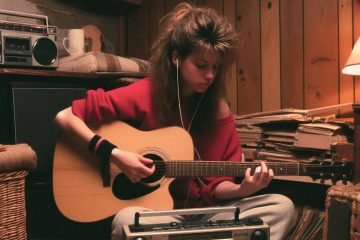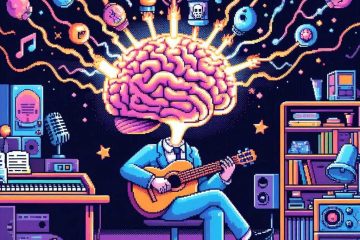When I’m not mixing and mastering client projects, I indulge in a quirky passion: writing royalty-free spaghetti western music. Surprisingly, there’s a demand for these tunes in Latin American podcasts, Turkish soap operas and people just wanting background music for that intense last round of cards.
I was working on a new piece recently and I was getting to the pointy end of the project. I had all of the elements of the piece in place but was ready adding those finishing touches.
Flow On Tap
I decided that the song would benefit from some acoustic guitar. I turned around in my chair and grabbed my utility mic (an AT2020 for those playing at home). It was already plugged in and on a stand ready for such an occasion. Plucked my acoustic guitar off the stand, tuned and I was off.
I was relistening to the introduction of the song which had tremolo electric guitar and whistle drenched in spring reverb (#authentic). This was recorded at half the speed of the rest of the piece but I realised that it was still too fast and this took away from the desired level of haunting I was looking for.
Whilst still sitting in my chair, I reached behind me for my faux-telecaster and plugged it in. After less than a minute of patching into the guitar pedals I have in a stand in front of me, I was ready to record guitar.
I then grabbed the utility mic and whistled the haunting melody. Moved some sections around and viola! a slower and more evocative introduction.
It was a nice flow and by the end of the 2 hour session the song was pretty much ready to mix.
The seamless transition between these steps wasn’t just luck. It was the result of having my tools readily accessible, minimizing disruptions to my creative flow.
Everything In Its Right Place
James Clear’s book, “Atomic Habits,” emphasizes designing your environment to support desired habits. It’s a simple concept with profound implications. For songwriters, this means strategically arranging your instruments, microphones, and gear for effortless access.
An Efficient Space Is A Creative Space
My experience showed me that an organized workspace isn’t just about convenience; it’s about not hindering creativity. When everything is within reach, I can effortlessly experiment and capture ideas as I go, without losing momentum.
Inefficient Spaces Can Stifle Creativity & Make Us Lazy
In a world of virtual instruments and plugins, it’s easy to become reliant on digital tools. While it might be convenient to quickly get down a part using a virtual instrument, this can sometimes hinder the exploration of real instruments and sounds. By keeping your instruments set up and ready to play, you’re more likely to incorporate their unique textures and tone colors into your music.
The Takeaway: Design Your Songwriting Sanctuary
- Prioritize Accessibility: Keep your most-used instruments and gear within arm’s reach. This eliminates the friction of searching for cables or setting up equipment, allowing you to focus on the music.
- Embrace “Ready to Play”: Leave your instruments plugged in and tuned. This simple step makes it easier to pick them up and start noodling, even for a quick idea. I came up with the bones for this spaghetti western song in between bounce downs of client project because my guitar is within arms reach.
- Declutter and Organize: A tidy space promotes a clear mind. This is a big one for me because I’m the only one utilising the space. Regularly declutter your workspace to minimize distractions and create a serene environment for creativity to flourish.
- Personalize Your Space: Surround yourself with items that inspire you, whether it’s artwork, posters, or meaningful objects. This can create a positive atmosphere that fuels your creativity. I have also gotten into mood lighting. Smart LED bulbs and strips are relatively cheap but can bring great vibe to your space.
- Adapt to Your Needs: Not everyone has a dedicated studio. Find creative solutions to optimize your available space. Use wall mounts, stands, or portable solutions to maximize accessibility.
Your creative space is more than just a room; it’s an extension of your artistic process. By thoughtfully designing your workspace, you can unlock of inspiration, productivity, and flow. If you’re trying to build a songwriting habit so you can record and release more music, you need to create the best version of this space as you situation allows.



0 Comments